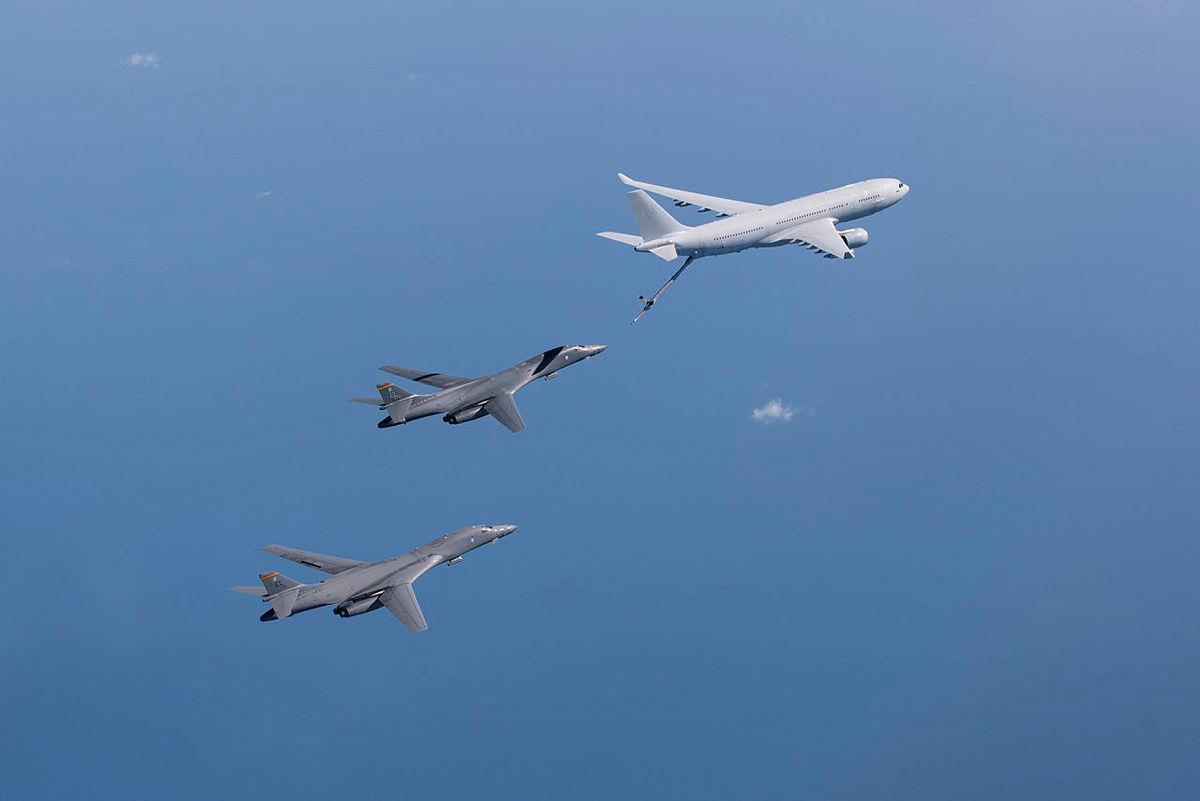
Sea state
Australia has commissioned the second of its two Supply-class auxiliary oil replenishment ships, HMAS Stalwart. The two Spanish-built ships will be stationed on opposite sides of Australia, with HMAS Supply, commissioned in April, to be based in Sydney and the Stalwart at Rockingham in Western Australia. The multipurpose vessels are expected to serve for 25 years, replacing HMAS Success and HMAS Sirius. Their role is to supply Royal Australian Navy ships with cargo, ammunition and fuel and to contribute to regional humanitarian assistance and disaster relief operations.
Israel, Bahrain and the United Arab Emirates have conducted joint naval drills for the first time in the Red Sea, alongside the US, after normalising their relations last year through the US-brokered Abraham Accords. An Israeli officer said the interoperability drills would strengthen the group’s cooperation against ‘Iranian terror’ in the region. The Red Sea is highly consequential geopolitically for the nations involved as the maritime avenue connecting the Suez Canal to the Indian Ocean and a chokepoint for global shipping.
Flight path
Two US Air Force B-1B Lancer bombers participated in a joint exercise with Royal Australian Air Force P-8A Poseidon and KC-30A multi-role tanker transport aircraft at RAAF Base Darwin. After travelling more than 6,000 kilometres from the British territory of Diego Garcia in the Indian Ocean, the two USAF B-1Bs met two RAAF KC-30As and practised air-to-air refuelling over the Timor Sea, emergency familiarisation training and other interoperability exercises.
Boeing’s Airpower Teaming System, developed in Australia in partnership with the RAAF, has reached a new milestone with the unveiling of a second prototype test vehicle. The first and second ‘Loyal Wingman’ uncrewed aircraft successfully completed separate test flights earlier this month at the Woomera Range Complex in South Australia, including first-time testing of the landing gear. After the first drone’s debut flight in February, the Australian government doubled its initial order to six, with three systems from the first phase of the project to be delivered by the end of this year.
Rapid fire
Tensions continued to mount this week on the Poland–Belarus border. The worsening humanitarian crisis was compounded by the potential for miscalculation as both sides escalated their militarised responses. On Saturday, Belarusian President Alexsander Lukashenko repeated his request for Russian Iskander missile systems and held snap paratrooper exercises with Russia. Poland has deployed 20,000 personnel and Latvia has dispatched 3,000 troops and fenced off its own border with Belarus. The Suwalki corridor between Poland and the Baltic states is viewed as a particular vulnerability by NATO because it’s sandwiched between Belarus and Russian Kaliningrad.
Australian Electro Optic Systems has unveiled its new weapon in the fight against increasingly sophisticated unmanned aircraft systems: a directed-energy turret. The T2000-DE is capable of engaging drones at greater range and altitude than conventional cannon or machine gun systems, and is aimed at destroying drones’ ‘target acquisition or designation capability’. The need for such systems was demonstrated during the Nagorno-Karabakh war, where a ‘proliferation of weaponized drones’ proved a formidable threat.
Final frontier
Russia performed a controversial test of a direct-ascent anti-satellite, or ASAT, missile this week, which destroyed the defunct Soviet-era satellite Cosmos-1408 and created the largest new space debris field since 2007. The debris cloud caused astronauts and cosmonauts on the International Space Station to take emergency shelter in the attached Crew Dragon and Soyuz capsules for a number of hours. The US has condemned the ‘dangerous and irresponsible’ test for endangering the safety and security of outer space, threatening the interests of all nations.
On 9 November, California-based space company SpinLaunch announced the first successful test flight using its suborbital accelerator, spinning a rocket several times the speed of sound in a vacuum-sealed centrifuge before launching it into the upper atmosphere (watch it here). The kinetic-energy-based launch system is designed to lower the cost of launching payloads into space by reducing fuel requirements and the need for heavy and expensive booster rockets. SpinLaunch aims to conduct 30 more suborbital test flights over the next six to eight months.
Wired watchtower
Despite threatening to withdraw from the Australian market earlier this year, Google has announced a ‘digital future initiative’ that will see it invest $1 billion in Australia over five years to establish a research hub, expand its cloud infrastructure and partner with the Commonwealth Scientific and Industrial Research Organisation. Modelling predicts that these projects will create 6,500 new jobs, and the initiative is likely to expand Australia’s role in technology innovation.
New research from Fairplay, Global Action Plan and Reset Australia claims Meta—the new name for Facebook—is not honouring the commitments it made in July to stop surveillance of young people for ad targeting. The research found evidence that artificial intelligence and data-harvesting were still being used to targets ads towards teenagers. The news comes as pressure mounts in Australia, the EU and US for governments to introduce legislation to dilute the influence of big tech on society.